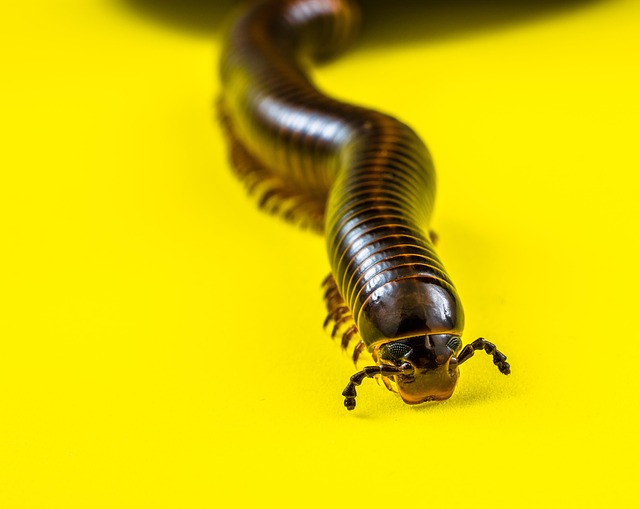Millipedes, persistent in damp areas, require a strategic approach for professional removal. Experts use a combination of sealing entry points, maintaining dryness, and employing natural repellents, traps, and targeted treatments to eliminate and prevent infestations. Regular inspections, proactive monitoring, and seasonal precautions, as advised by professionals, are vital for achieving and maintaining a millipede-free environment.
“Millipedes, though harmless, can infest homes and businesses, causing unease and potential damage. To maintain a millipede-free environment, proactive measures are essential. This article guides you through comprehensive solutions, starting with understanding these creatures’ behavior and habitat. We delve into professional millipede removal techniques and strategies, emphasizing the significance of developing tailored maintenance plans. Furthermore, learn about regular checks and seasonal precautions to ensure long-term protection against these tiny invaders, focusing on effective, expert-recommended solutions.”
Understanding Millipedes: Behavior and Habitat
Millipedes are tiny, multi-legged creatures that, despite their name, are not closely related to spiders. They prefer damp environments and often inhabit areas with high moisture content, such as under rocks, logs, or leaves. In homes and commercial spaces, millipedes tend to find shelter in dark, humid places like basements, crawl spaces, and bathrooms. These creatures are nocturnal, so they’re most active after dusk when they emerge to forage for food.
Understanding their behavior is crucial when developing a professional millipede removal strategy. Millipedes don’t typically travel far from their hiding spots, so identifying and sealing entry points is a key step in prevention. Regular maintenance includes keeping areas dry, fixing leaky pipes, and ensuring proper ventilation. A professional millipede removal service may employ a combination of methods, including natural repellents, mechanical traps, and targeted treatments to eliminate existing populations and deter future infestations.
Professional Millipede Removal: Strategies and Techniques
Professional millipede removal requires a strategic approach tailored to each unique situation. Experts employ various techniques, from targeted treatments using specialized pesticides to non-toxic methods like natural repellents and physical barriers. These professionals know where to look for signs of an infestation and how to identify different millipede species, which is crucial for effective control.
They also understand the importance of preventing reinfestation by sealing entry points, maintaining excellent sanitation, and regularly inspecting areas prone to these pests. By combining these strategies, professionals can ensure a millipede-free environment, providing long-lasting solutions for both residential and commercial spaces.
Developing an Effective Maintenance Plan
Developing an effective maintenance plan is key to achieving and maintaining a millipede-free environment. This involves a multi-faceted approach tailored by professionals in millipede removal, combining prevention strategies with proactive monitoring. Regular inspections are crucial to identifying potential entry points and early signs of infestation, allowing for swift action to prevent the return of these persistent pests.
The plan should encompass thorough cleaning practices, sealing gaps and cracks, and implementing integrated pest management techniques. Using eco-friendly methods and traps can help control millipede populations humanely. A professional’s expertise ensures these measures are effective and tailored to specific environments, offering long-lasting solutions for a millipede-free haven.
Regular Checks and Seasonal Precautions
Regular checks are an integral part of any millipede-free environment maintenance plan. Professionals recommend conducting thorough inspections at least twice a year, focusing on the corners and crevices where these creatures tend to hide. During these checks, look for signs of millipedes like small tracks, shed skins, or live insects. Early detection is key; it allows for swift action using professional millipede removal techniques before an infestation grows.
Seasonal precautions are equally vital. Spring and autumn, when temperatures moderate, often see an increase in millipede activity. This is when these creatures emerge from their winter hibernation or seek new habitats as the weather changes. To prevent indoor infestations, ensure that all entry points, such as cracks around doors and windows, are sealed. Regularly vacuum high-risk areas, emptying the vacuum bag promptly to avoid leaving any millipede remnants behind.
Maintaining a millipede-free environment requires a comprehensive approach, from understanding these creatures’ habits to implementing effective strategies. Professional millipede removal services offer specialized techniques for severe infestations. Developing a tailored maintenance plan, including regular checks and seasonal precautions, is key to preventing future invasions. By combining knowledge, professional intervention, and proactive measures, you can ensure a comfortable and millipede-free space.
